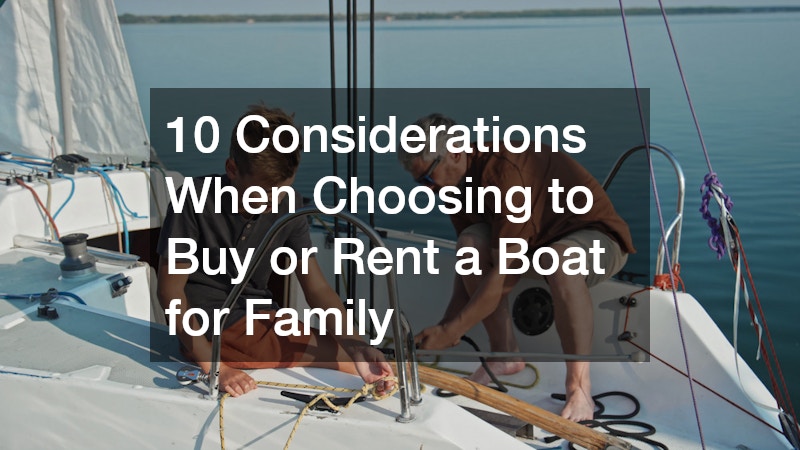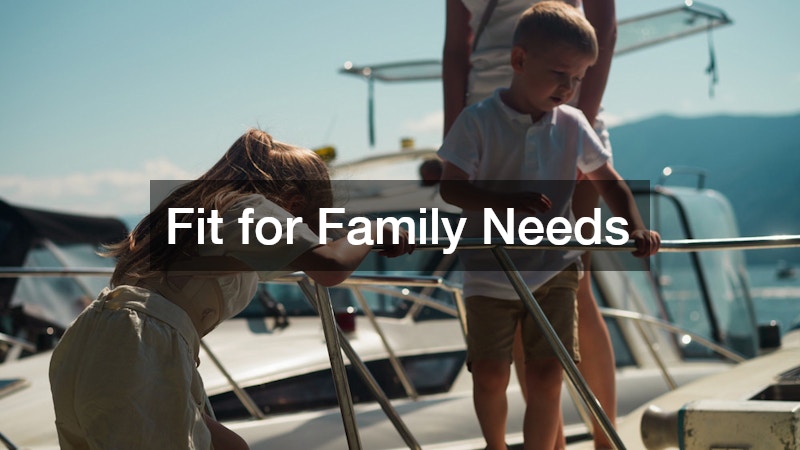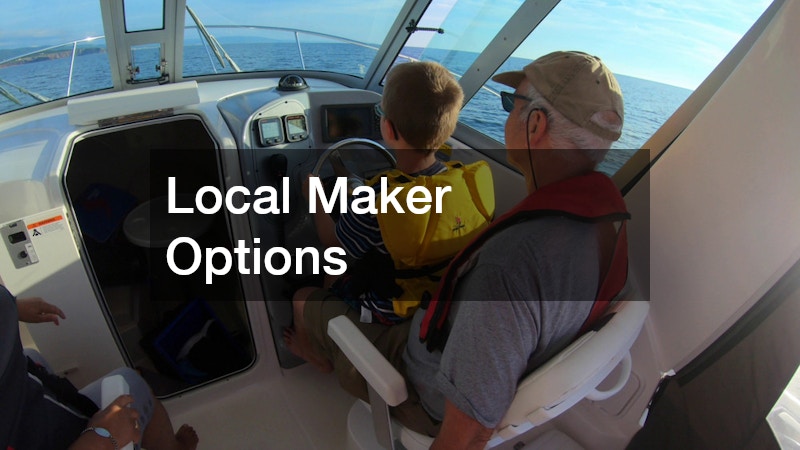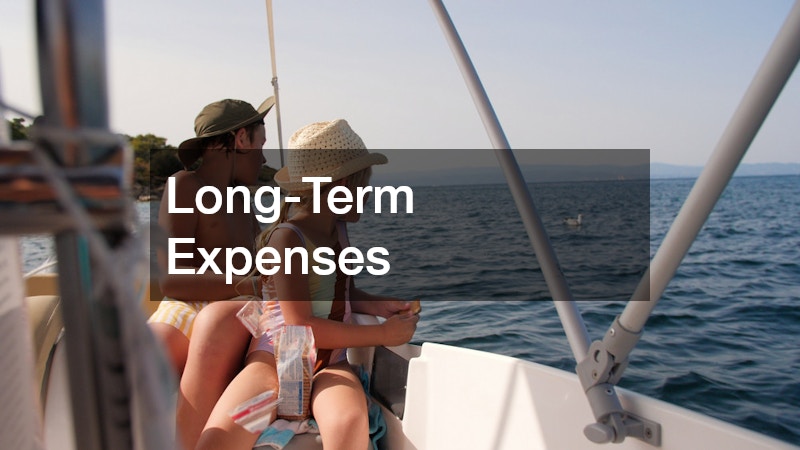Making the decision between buying or renting a boat is a significant choice for families who dream of spending time on the water. The right boat for family outings can open opportunities for weekend adventures, vacations, and bonding time that brings lasting memories. Yet, the process of deciding whether to purchase outright or lease temporarily involves many layers of consideration. Families must think beyond the excitement of getting out on the lake or ocean and carefully weigh the practical aspects that come with ownership or short-term use.
When considering such a decision, a variety of factors come into play. Cost is often the first concern, as the upfront investment of buying differs greatly from the recurring expenses of renting. There’s also the question of whether new or preowned models make more sense for your family’s budget and needs. Some families will prioritize size, comfort, and safety features to ensure children and guests are accommodated well, while others may focus on technology and performance to make boating smoother and more enjoyable.
This article explores ten distinct considerations that families should evaluate before making their decision. By breaking down the important topics—from cost and condition to maintenance and storage—you’ll be able to see a clearer comparison between renting and owning. With this insight, your family can move forward with confidence, knowing the choice is tailored to both your lifestyle and financial situation.

1. Costs to Weigh First
The financial aspect is the starting point for any family debating between buying or renting. Owning a vessel typically requires a large initial investment, but renting often comes with ongoing payments that may add up over time. Understanding your budget and how much you’re willing to dedicate to leisure activities on the water is essential before making a commitment. Many families find that comparing both options side by side gives a clearer view of where their money will be best spent.
When considering these costs, it’s important to account for more than just the price tag of the boat itself. Insurance, fuel, seasonal preparation, and even licensing all add additional financial layers. For families who only plan occasional outings, renting may seem more manageable, while those expecting frequent use may find ownership more practical in the long run. Taking time to outline every expense will ensure there are no unpleasant surprises later.
Another element to factor in is how costs tie into the overall value the vessel brings to your lifestyle. A boat can be more than an object of recreation—it’s an investment in family experiences and traditions. By comparing short-term and long-term expenses, families can assess whether the flexibility of a rental or the lasting commitment of ownership aligns better with their needs. This decision ensures that the choice of boat for family enjoyment remains both financially responsible and personally rewarding.
2. New vs. Preowned Choice
Another important consideration is whether to purchase a brand-new model or a preowned option. A new vessel brings peace of mind with warranties and modern features, while a preowned one can offer significant cost savings. Families need to weigh the value of new technology against the appeal of a lower entry price. For those unsure about long-term boating, a preowned option can serve as a more affordable introduction.
When looking into preowned models, one key factor is the reputation of the local boat manufacturer. Reliable builders create vessels that last, and purchasing from such a source—whether new or used—can provide reassurance about durability and performance. Examining service histories, prior use, and maintenance records is also critical when evaluating preowned options. Families can avoid potential headaches by carefully vetting these details before finalizing a purchase.
The new-versus-used debate is ultimately about balance. While a new model provides comfort through updated features and guarantees, a preowned boat may deliver more value for families looking to save. Choosing carefully ensures that the vessel purchased not only meets the family’s budget but also fits their intended use. Making this decision wisely allows the boat for family activities to serve its purpose without unnecessary financial strain.
3. Fit for Family Needs
Choosing a vessel that fits your family’s specific requirements is central to the decision-making process. Factors like seating capacity, safety features, and onboard amenities can make or break the overall experience. A family with young children may prioritize safety rails and shaded areas, while teenagers might prefer space for water sports equipment. Matching the vessel to your family’s lifestyle ensures comfort and functionality.
One option to explore is family boat rental, which allows you to test different models before committing to ownership. Renting gives families firsthand experience with size, design, and features, helping them determine what works best. It also provides flexibility—if your family’s needs change, you’re not locked into a single style or size. This trial approach can offer valuable insight before a long-term financial decision is made.
Understanding fit goes beyond immediate preferences; it’s also about anticipating growth and change. Families may expand, children may grow, or interests may shift toward new water activities. Selecting a vessel that accommodates both current and future needs ensures lasting satisfaction. Whether rented temporarily or bought outright, the right match guarantees that the boat for family gatherings becomes a source of joy for years to come.
4. Tech and Stability
Modern technology has transformed the boating experience, making outings smoother, safer, and more enjoyable. One of the most valuable advancements for families is improved stability, which reduces rocking and keeps passengers comfortable. A smooth ride can make the difference between a relaxing day on the water and one filled with seasickness or unease. Families should prioritize vessels that provide the comfort and reassurance needed for all ages.
A standout innovation in this area is the seakeeper system, which minimizes boat roll and creates a more stable environment. For families with children or those prone to motion discomfort, this feature can be a game changer. It allows everyone on board to enjoy their time without distractions, whether they’re fishing, dining, or simply cruising. While it may come with a higher price tag, the added comfort can justify the investment.
Technology and stability also contribute to peace of mind for parents. Knowing that their boat for family excursions is equipped with systems designed to keep the ride safe makes outings far more enjoyable. By choosing wisely, families can focus on creating memorable experiences together rather than worrying about conditions on the water. These innovations enhance not only the immediate ride but also long-term enjoyment of the vessel.
5. Local Maker Options
Supporting nearby businesses is often a priority for families making large purchases. Choosing a vessel built close to home means easier access to parts, services, and customer support. Beyond convenience, working with a trusted local builder often ensures that your vessel is well-suited to the specific conditions of your area’s waterways.
The reputation and reliability of a local boat manufacturer can significantly influence your decision. These companies understand the environment, weather, and needs of families in their region, tailoring their designs accordingly. Buyers who choose local often gain not only a product but also ongoing support from professionals familiar with their craft. This accessibility can prove invaluable if issues arise or upgrades are needed down the road.
In addition to practical benefits, choosing locally made vessels supports the community. Families investing in such purchases foster relationships with businesses that value long-term customer satisfaction. This relationship strengthens confidence and ensures the boat for family use will have backing from knowledgeable professionals who genuinely care about their clients’ experience.
6. Short-Term Rentals
For many families, renting instead of buying is the most practical choice, especially if they’re still testing the waters. Rentals offer flexibility, allowing you to enjoy boating experiences without the heavy commitment of ownership. They’re perfect for vacations, occasional outings, or families who don’t want to handle the responsibilities of maintenance and storage.
Exploring the range of boat rental opportunities helps families find the arrangement that fits best. Some companies provide hourly or daily options, while others offer seasonal packages. This flexibility can make boating accessible to more families, providing the chance to experience various types of vessels without committing to a single model. It also allows families to enjoy high-quality boats that might otherwise be financially out of reach.
Rentals also give families the ability to explore and adapt as their needs change. One season might call for a smaller vessel for quick getaways, while another may inspire longer excursions that require more space. This adaptability ensures the boat for family recreation is always well-matched to the occasion, letting you focus on fun rather than logistics.
7. Long-Term Expenses
One of the biggest differences between renting and buying comes in the long-term costs. Ownership carries ongoing responsibilities that extend far beyond the initial purchase price. Fuel, insurance, registration, and upkeep all add to the financial commitment. Families must be realistic about these recurring costs to avoid being overwhelmed later.
A key factor within these expenses is marine repair. Even with excellent care, parts wear down, engines need servicing, and unexpected issues can arise. Families who buy must budget not only for preventive maintenance but also for occasional larger repairs. Those who rent often avoid this responsibility, as the rental company usually manages all technical concerns.
Planning for long-term expenses ensures stability and peace of mind. When families understand the true costs of ownership, they can decide whether the investment is sustainable for them. Balancing these considerations helps ensure the boat for family use remains a source of enjoyment rather than financial stress.
8. Docking Considerations
Finding a place to keep the vessel is a challenge that comes with both practical and financial implications. Access to convenient boat docks makes regular outings far easier, while limited options can add unnecessary hassle. Families should research available marinas, private slips, or waterfront properties to determine the best fit.
Protection also plays a role, which is where a local boat cover becomes important. Exposure to the elements can wear down the vessel quickly, but quality covers prevent weather damage, keep interiors clean, and protect valuable equipment. Families must decide whether docking facilities provide adequate protection or if additional measures are needed.
Docking considerations should also include proximity to home and ease of access. If it takes too long to reach the dock, spontaneous outings become less likely. When families have quick and simple access, their boat for family experiences become more frequent, enjoyable, and integrated into their routine.
9. Care and Upkeep
Taking care of a vessel is essential to maintaining its performance and appearance. Regular cleaning, inspections, and preventive work are necessary whether you rent or own. Families considering ownership must ask themselves if they have the time and interest in maintaining the vessel themselves or if they will rely on professionals.
One major aspect of upkeep is boat storage. Proper storage keeps the vessel in good condition during off-seasons and protects it from environmental wear. Families must factor in whether they will use professional storage facilities or find space at home. Each choice comes with different costs and levels of convenience.
Care and upkeep are about more than maintenance—they are about extending the life of the vessel. By committing to proper care, families ensure the boat for family activities is always safe, reliable, and ready for use. Neglecting this area, on the other hand, can quickly turn boating from a pleasure into a burden.
10. Storage Solutions
Where to keep the vessel when it’s not in use is another major consideration. For families who choose ownership, storage can be a logistical challenge, especially during harsh seasons. Safe storage protects the vessel and reduces long-term costs, while poor storage exposes it to damage that shortens its life.
A common option is using a boat storage unit. These facilities provide secure, climate-protected environments designed specifically for vessels. While there is an added cost, many families find the peace of mind worth the expense. It eliminates worries about theft, weather damage, or neighborhood restrictions.
The right storage solution is one that aligns with both budget and convenience. Families who invest in secure options protect their vessel’s value and ensure it remains ready for future outings. Choosing wisely means the boat for family adventures will always be cared for, preserving both the investment and the memories it creates.
Choosing between buying or renting a vessel is not a decision to take lightly. Families who dream of time on the water must think beyond the thrill of adventure and consider the practical elements that come with such an investment. The process is shaped by many variables, from initial costs and long-term expenses to the technical features, maintenance, and storage requirements. When these elements are carefully examined, the choice becomes clearer and far more manageable.
By taking the time to reflect on these ten points, families give themselves the best chance of making a choice that will bring lasting joy. The ultimate goal is to select an option that makes boating an enriching part of your family’s life. Whether through ownership or rental, the right boat for family outings will become a cornerstone of shared memories and meaningful experiences on the water.



